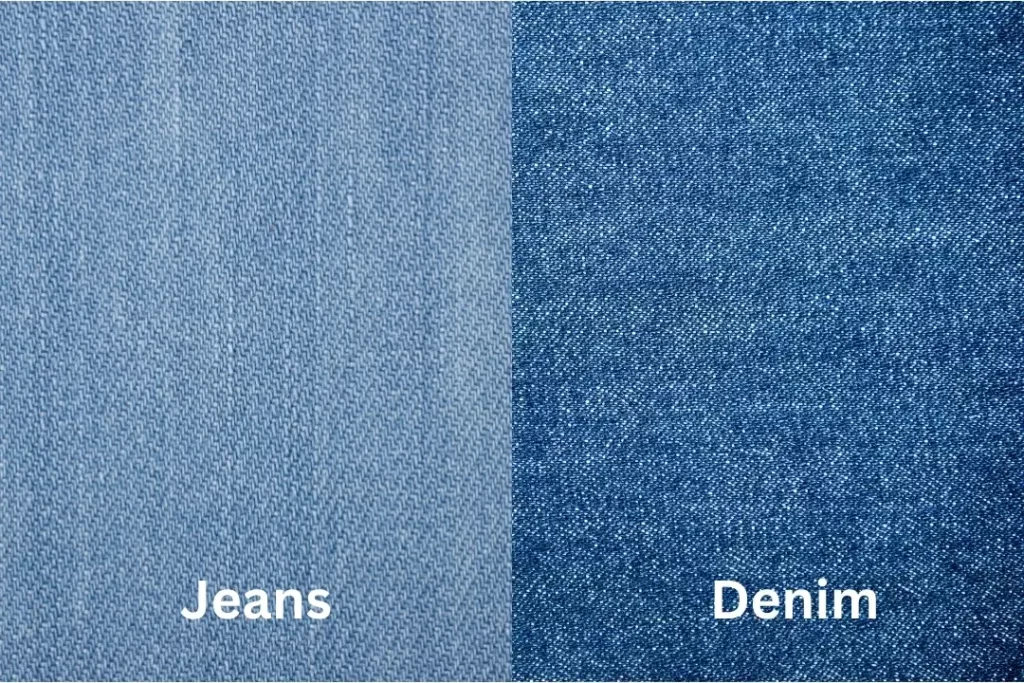
Why Clothing Brands Fail
Top Different Types of Shirts for Women and Men Top Different Types of Shirts for
Decoding the Denim vs Jeans mystery | Unveling the real difference behind the two that you never knew before!
Have you ever found yourself perplexed when shopping for a new pair of pants? You know, the constant pondering over whether it is denim vs jeans you’re actually searching for. If this has happened to you and you are looking to know the real hidden difference between these commonly confused terms, then it’s the perfect place to know the real truth. The purpose of this blog is to truly unravel the mysteries around the terms “denim” and “jeans”, denim vs jeans history and provide a clear and accurate understanding of what they actually are. So sit back, relax, and let the truths unfold before your eyes. Without any further delay, let’s unsolve the mystery behind denim vs jeans difference.
It’s no surprise that many are left confused when it comes to determining denim and jeans from each other. There is a myriad of causes why these phrases can lead to such confusion, including the way they are sold and the wrong use of both terms. Let’s dive deeper into the why and eliminate the confusion once and for all.

One reason for the confusion is that numerous fashion brands and retailers use both terms interchangeably to hype up their products. Advertising campaigns and flashy website descriptions sell the same pair of pants as “denim jeans” or “jean pants,” blurring the lines between the materials and styles. This marketing-inspired confusion leads to people using the terms “denim” and “jeans” as if they were the same concept.
Another reason behind the ambiguity is the widespread habit of people utilizing the terms incorrectly, which stems from a lack of understanding of their origins and distinctive traits. Those unfamiliar with the language of fashion, for example, often describe any trousers made from denim as simply “jeans,” regardless of their specific style or construction. Similarly, some folks might refer to a piece of denim clothing (such as a jacket or skirt) as “jeans,” adding even more uncertainty to the mix. To clear up this tangled web of denim vs jeans, it is vital to recognize and acknowledge the vital distinctions between denim and jeans and ensure we use these terms accurately and appropriately.
Before we venture further, let’s get one distinction clear right off the bat: Denim is the sturdy and rugged fabric used to manufacture a range of clothing, while jeans are a specific type of trousering formed from denim. Once you grasp this essential differentiation, knowing the distinctions between denim and jeans becomes significantly more manageable.
Denim is a robust, tightly-woven cotton textile celebrated for its durability and distinctive look. Recognizable by its iconic indigo-blue colour and a signature twill texture, denim is celebrated for its versatility, utilized in the creation of diverse garments such as jackets, skirts, shirts, and, of course, the ever-popular pants. The name “denim” originates from the French phrase “serge de Nîmes,” referencing the city where the fabric was first produced. Given its impressive strength and hard-wearing nature, denim has long been the material of choice for workwear throughout history.
Jeans, on the other hand, are stylish trousers designed specifically from denim material. Known for their casual yet versatile appeal, jeans have become a wardrobe staple for millions of people worldwide. Invented in the late 19th century by Levi Strauss and Jacob W. Davis to endure the strenuous demands of hard labour, these pants are available in various styles, cuts, and washes to suit diverse tastes and trends over time. The name “jeans” traces back to ‘Gênes,’ the name the French used for the city of Genoa, where sailors donned cotton twill trousers. This pivotal piece of fashion history paved the way for the modern jeans we know, love, and cherish in today’s world.
As we understand the key differences between denim (the fabric) and jeans (the garment), it’s time to explore their various forms and the unique styles available.
While the universally recognized indigo denim remains dominant, denim is also available in several colours, weights, textures, and finishes. Ranging from lightweight chambray to heavy-duty raw denim, the options are seemingly endless. Some popular finishes include stonewashed, acid-washed, and distressed, each providing a distinct aesthetic appeal.
A lighter and more breathable relative of classic denim, chambray is often used for shirts, dresses, and thin jackets. – Raw Denim: Durable and sturdy, raw denim is unwashed denim in its purest form—making it an excellent choice for tailored and well-fitted garments. The wearer can add personalized fades and wear marks as the fabric ages and softens over time. – Selvedge Denim: Produced using traditional weaving techniques, selvedge denim is known for its high-quality and clean-edge finish, evident in its signature red stitching on the seam. Selvedge denim is a favourite among those seeking a premium and long-lasting product.
When it comes to jeans, myriad styles and cuts cater to different body types, preferences, and occasions. Some of the most popular and enduring styles include:
Fitted and body-hugging, skinny jeans sharply taper towards the ankle, accentuating the leg’s natural lines. A favourite among trend-driven fashion enthusiasts, skinny jeans can provide a modern and bold look
A classic and universally-flattering cut, straight-leg jeans fall in a consistent width from the hip to the ankle, offering a timeless and versatile option suitable for various occasions and wardrobes.
Characterized by a subtle flare starting around the knee area, bootcut jeans provide a comfortable fit and ample space for accommodating the bulkiness of boots.
With a roomier and more relaxed fit from top to bottom, wide-leg jeans offer unparalleled comfort and vintage-inspired style, perfect for both casual and more dressed-up events.
To maintain their quality, appearance, and longevity, it’s also very important to care for your denim garments and jeans appropriately. Here are some expert tips to keep your beloved pieces looking their best:
By exploring the difference between denim vs jeans, their history, styles, and care techniques for both denim and jeans, we hope to have shed light on the key differences amidst the confusion . Denim, the fabric, and jeans, the garment, both carry unique properties and styles to suit an array of tastes and needs.
Now, with this newfound clarity, you can confidently recognize the distinctions between these terms. No more confusion should surround the denim versus jeans debate—an essential aspect of fashion we all encounter and enjoy.
If you want to learn more about jeans click here.
: Denim refers to the sturdy, cotton-based fabric, while jeans are garments (typically pants) made from denim material. Denim is the fabric, and jeans are the piece of clothing created using that fabric.
Yes, chambray is a lightweight relative of classic denim. It is often used for shirts, dresses, and thin jackets due to its breathability.
While jeans are traditionally made from denim, they can also be made from other materials, such as corduroy and cotton twill. However, denim remains the most popular and widely-used fabric for jeans production.
: Quality denim typically features a higher thread count, even colour, and a tight weave. Check for an overall uniform appearance, sturdy seams or selvedge edges, and the weight of the fabric, which should feel heavier and denser compared to lower-quality denim.
Expert Custom Clothing Manufcaturer

Top Different Types of Shirts for Women and Men Top Different Types of Shirts for

What You Must Know About Clothing Samples? Before You Produce a Single Garment: What You

How Much Does It Cost To Make a Hoodie A Complete Cost Breakdown for Custom

Discover the Types of Buttons Discover the Types of Buttons That Transform Style and Functionality
Most Recent Posts
Expert Custom Clothing Manufcaturer
Join our Mailing list!
Get all latest news, exclusive deals and updates.